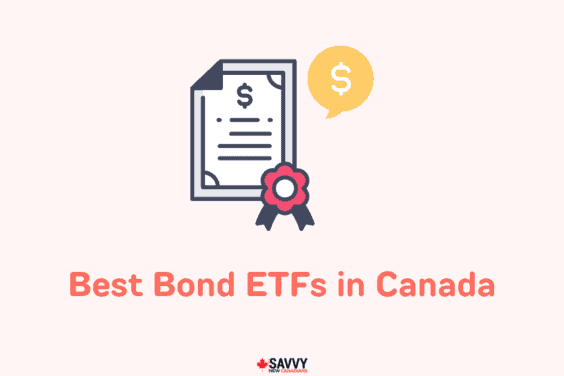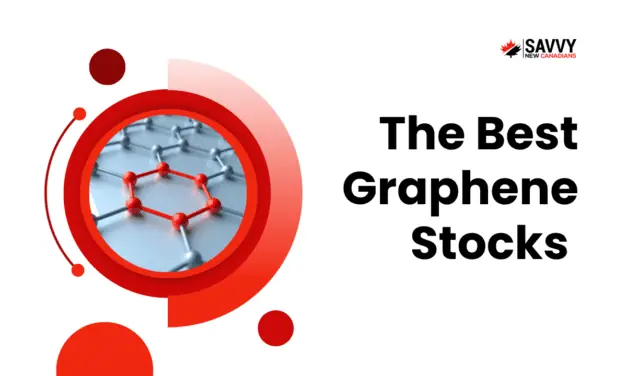Tangerine’s line of investment funds is one of the choices investors have if they want to purchase index funds.
It has five core portfolio funds that are designed to replicate the performance of specific market indexes.
Investors can choose one or a combination of funds based on their risk tolerance, return expectations, and other investment objectives. Each fund is globally diversified and has an MER of 1.06%.
It also recently introduced global ETF portfolios.
The five investment funds are as follows:
A. Tangerine Balanced Income Portfolio (INI210)
This fund is heavily weighted in bonds (70%) as opposed to stocks (30%). It provides safety for investors who do not want to hold onto a portfolio with lots of fluctuations going on and seeks to replicate the following market indexes:
- Canadian Bonds (70%) → FTSE TMX Canada Universe Bond Index
- Canadian Stocks (10%) → S&P/TSX 60 Index
- U.S. Stocks (10%) → S&P 500 Index
- International Stocks (10%) → MSCI EAFE Index
The fund has a risk rating of “low to medium” and its MER is 1.06%.
B. Tangerine Balanced Portfolio (INI220)
This fund holds a fair balance of bonds (40%) and stocks (60%). It is designed for investors who want to potentially generate more growth in their portfolio through stocks without facing a higher level of volatility that is normally experienced with an all-equity fund. Its asset allocation is as follows:
- Canadian bonds (40%)
- Canadian stocks (20%)
- US stocks (20%)
- International stocks (20%)
The market indexes being tracked are the same as for the Balanced Income Portfolio. This fund has a risk level rating of “low to medium” and an MER of 1.06%.
C. Tangerine Balanced Growth Portfolio (INI230)
Tangerine’s Balanced Growth Portfolio holds more stocks (75%) than bonds (25%). It is great for investors who are willing to ride the tide of volatility and who have time on their side to make the most equity growth. Its asset allocation consists of:
- Canadian bonds: 25%
- Canadian stocks: 25%
- US stocks: 25%
- International stocks: 25%
This fund’s risk level is rated at a “medium.” Its MER is 1.06%.
D. Tangerine Equity Growth Portfolio (INI240)
Their Equity Growth Portfolio is fully invested in stocks (100%). An all-equity investment comes with its risks and rewards. Stocks have historically generated the most returns of all major investment asset classes over the long term. However, in the short term, they may be subject to extreme ups and downs, and to make money, you should be willing to stay the course.
This fund’s asset holdings are as follows:
- Canadian stocks: 33.4%
- US stocks: 33.3%
- International stocks: 33.3%
It is rated higher on the risk scale as “medium to high.” Its MER is 1.06%.
E. Tangerine Dividend Portfolio (INI235)
This fund is aimed at investors who desire a portfolio heavily weighted in dividend-paying stocks. The fund’s asset holdings and the market index they track are as follows:
- Canadian Dividend stocks (50%) → MSCI Canada High Dividend Yield Index
- US Dividend stocks (25%) → MSCI USA High Dividend Yield Index
- International Dividend stocks (25%) → MSCI EAFE High Dividend Yield Index
This fund has a risk rating of “medium,” and its MER is 1.06%.
Related: Tangerine Bank Review.
Advantages of Tangerine Investment (Index) Funds
Index funds offer advantages that are somewhat similar to investing with a robo-advisor. These include:
Diversification: Building a diversified portfolio through buying individual stocks and/or bonds is not easy. These index funds are pre-designed to be globally diversified, so you don’t have to worry about too much local concentration or home bias.
Low Cost: Average index fund fees are not yet as competitive as ETFs; however, they are much more competitive than comparative mutual funds. Fees are important, and since studies show that 80% of active mutual funds do not beat their market index, we continue to see an outflow of funds from mutual funds year after year.
Automated Investing and Rebalancing: Tangerine funds are easy to invest in. Heck, you can set up an automated investing plan where a specific amount of money (as little as $25) is deposited in your investment account on a schedule – set it and forget.
This automated investing helps you to stay invested at all times and use dollar-cost-averaging to your advantage. It also makes you less subject to your behavioural biases. In addition, you do not have to get your hands dirty to rebalance your portfolio, as it is done automatically on your behalf.
Low Minimum Investment: You can open an account with as little as $100, which means investors with a small account balance have an option outside of mutual funds. The Canadian Couch Potato strategy recommends a portfolio of at least $50,000 if you want to invest using a discount brokerage account.
Disadvantages of Tangerine Investment Funds
Cost: While the Tangerine investment funds are not ridiculously expensive at 1.06% (compared to an average of 1.98% for equity mutual funds), there are cheaper alternatives.
For instance, the average robo-advisor fee is around 0.70% (including ETF fees). With the DIY option, you can purchase standalone ETFs with MERs as low as 0.06%. However, with this option, you pay commissions when you trade (up to $10 per trade), which can add up to become significant if you trade frequently.
Flexibility: What you see is what you get. If you want a broader choice of funds, you may have to look elsewhere.
Investment Fee Comparison: Tangerine Funds vs. Robo-Advisors vs. Mutual Funds vs. DIY Investing
This is a simplified example to throw some light on how fees impact your investments. Note that other fees not included here may apply.
Let us assume you have a portfolio with investable assets worth $100,000. Your annual fees could easily look as follows:
- Tangerine Investment Funds: at 1.10% annual fees (after adding MER of 1.07% + 0.03% trading fees) = $1,100 per year in fees
- Robo-Advisors (e.g. Wealthsimple): at an average total fee of 0.70% (includes ETF fees) = $700 per year in fees (Find out how to get a cash bonus)
- Equity Mutual Funds: at 1.98% MER = $1,980 per year in fees!!
- Self-Directed (DIY) investing: using an average of 0.25% MER (approx. for Vanguard’s Conservative, Balanced, or Growth ETF portfolios) = $250 (excluding trading commissions)
Conclusion
Investing for newbies has never been easier. These days, you can DIY your investments by opening a discount brokerage account where you directly purchase ETFs and Stocks.
If you are not ready to go all-in with a DIY approach, other alternatives that demand less personal involvement and offer lower management fees (than traditional mutual funds) are indexing and investing via robo-advisors.
Speaking of investing fees, investors willing and able to venture outside of traditional investment approaches can potentially improve their long-term returns (significantly) by cutting the management fees they pay.
Markets wax and wane, and investment returns are not guaranteed. However, fees play a significant role in determining the real returns generated in your portfolio, which continue to grow to boost your net worth. The less you can pay in fees to derive market returns, the better.
To recap, Canadian newbie investors can use these three options to invest their money outside of traditional mutual funds:
- Index Funds – such as the Tangerine Investment Funds (Core Portfolios).
- Robo-Advisors – such as Wealthsimple. For more on robos, read my Complete Guide To Robo-Advisors in Canada.
- Self-Directed Investing via a discount brokerage account.
A robo-advisor such as Wealthsimple can save you a ton in fees using low-cost ETFs while also removing the hassle of rebalancing and portfolio management.
Wealthsimple Invest

Professionally managed ETF portfolios
Multiple account types
Auto rebalancing and div reinvesting
Get a $25 bonus with a $500 deposit
If you are interested in additional low-cost portfolio options, check out this list on the Canadian Couch Potato.
You may also like:
- Wealthsimple vs. Mylo
- Everything You Need To Know About Stocks
- Understanding the Place of Mutual Funds in Your Portfolio
- Index Fund Options For Investors in Canada
- Everything You Need To Know About GICs
- Best High-Interest Savings Accounts in Canada
Tangerine Investment Funds Review
Overall
Summary
The Tangerine Investment Funds offer great choices for beginner index investors who want to avoid the hassle of re-balancing. You can see what makes up the different Tangerine funds in this review. Also, see how the fees (MER) for these funds compare to what is charged by mutual funds, robo-advisors, and other DIY investing options.







The WealthSimple information is not current. Their robo-investment charges MER:
Under $99,999 0.50%
Above $100,000 0.40%
WealthSimple Trade (DIY brokerage) does not charge any commissions for selling or buying.
@Kyrie: The numbers used for the fee calculation includes the in-built ETF fees. I updated the numbers to reflect Wealthsimple’s average ETF MER which is 0.20%. It also assumes an account with assets up to $100,000.
Here’s my review of Wealthsimple Trade:
https://www.savvynewcanadians.com/wealthsimple-trade-review/
Hello,
Thank you for the detailed article.
Do you you know whether any of the Tangerine index funds have investments in the prison complex anywhere in the world?
I do not want a fund that invests in prisons, prison service companies or immigration detention facilities.
Any guidance would be greatly appreciated.
Thank you!
@TM: No, I haven’t dug into the individual equities held by the funds. You can take a look at some of the socially-responsible investing funds in Canada and drill down into their holdings to see how they fare on this metric. Wealthsimple, CI Direct Investing, and some big banks have funds in the ESG categories.